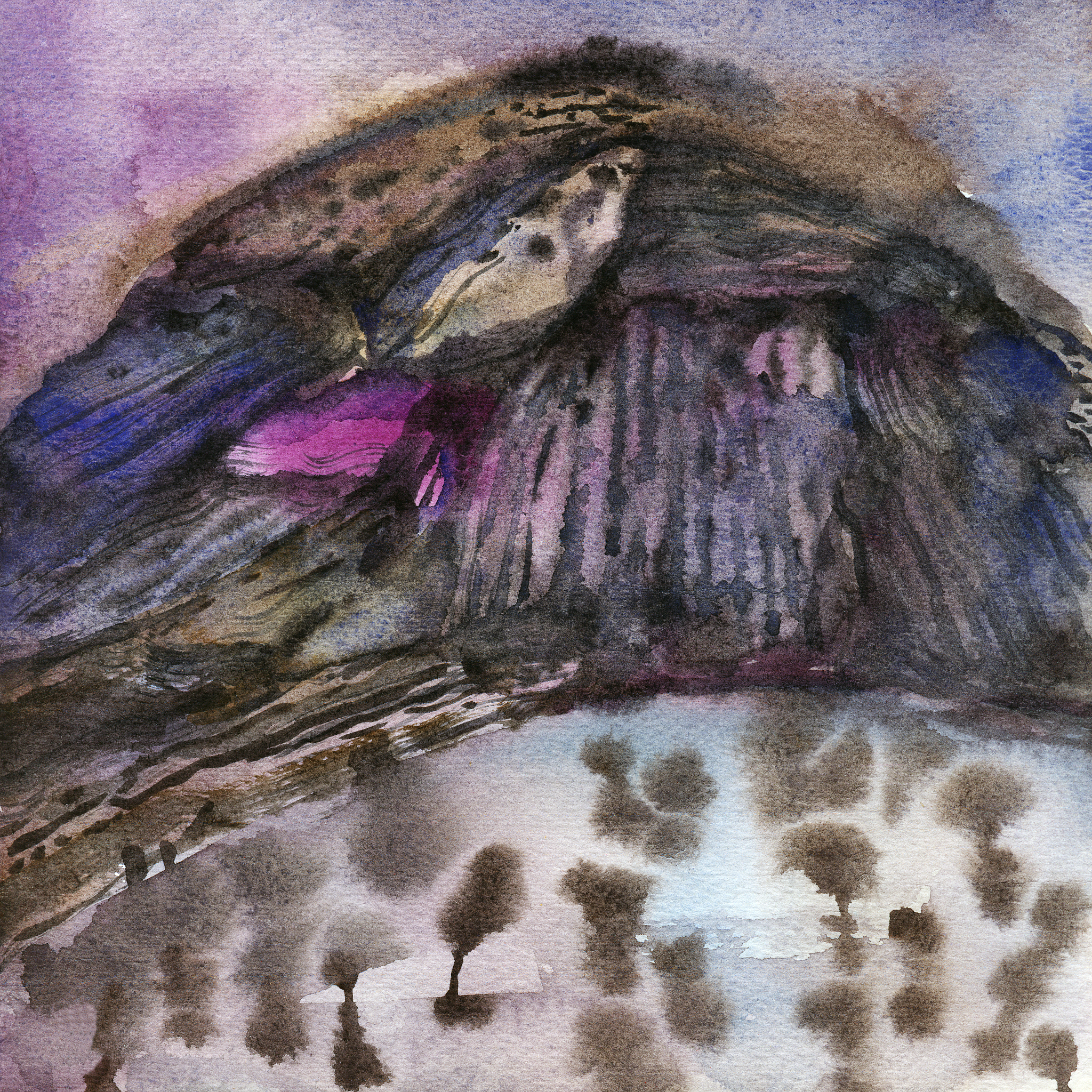Traditional and Modern Artistic Views of Ink Painting: Exploring the 'Unity of Nature and Humanity', 'Expression of Life', and 'Tao and Zen' Concepts
5.1.3.2 Traditional and Modern Artistic Views
The artistic views of ink painting can be summarized as the 'unity of nature and humanity', the 'expression of life', the combination of 'Tao' and 'Zen', the interaction of 'yin' and 'yang', and the fusion of ancient and modern and Chinese and Western art.
5.1.3.2.1 'Unity of Nature and Humanity'
The Chinese philosophy of the 'unity of nature and humanity' expresses the harmonious coexistence between humans and nature. The interaction between human and the spirit of heaven and earth forms the aesthetic concept of subjective and objective unity in traditional ink painting, especially in landscape painting. In Chinese philosophy, the combination of humans and nature and the transcendence of nature is considered the highest state of human life, which is regarded as the true realm of psychological and spiritual freedom and aesthetic realm, thus determining the close connection between Chinese art and life growth. The pursuit of 'forgetting oneself and nature, and unity of nature and humanity' is the inner pursuit of traditional literati ink art, which is the connotation of 'meaning, spirit, and Qi' in Chinese painting theory. It is the expression of the concept of 'Tao' and the 'unity of nature and humanity' in ink painting. Therefore, the spiritual purpose of traditional Chinese ink painting is 'unity of nature and humanity'. Of course, the claim of 'forgetting oneself and nature, and unity of nature and humanity' does not deny the subjective spirit of the artist. The active creativity of the subject is highly valued by painters. On the one hand, the relationship between subjectivity and objectivity is the relationship between 'nature as the teacher and the heart as the source'. On the other hand, it also emphasizes the imagination and spiritual freedom of 'transcending thoughts'.
5.1.3.2.2 'Expression of Life'
In Chinese philosophy, the universe is not a cold material space, but a heaven and earth with the existence of life. Therefore, in the eyes of the Chinese, ink and brush are living and dynamic cultural forms. This pursuit of the lively and vivid sense of life is reflected in the preference for 'dynamic sense'. Chinese artists want to express a lively painting style and the unity of inner profound and broad life spirit. In the use of ink and brush techniques, they express the rhythm of life appropriately. The pursuit of this sense of life is expressed in ancient painters' terms as vitality, liveliness, and natural charm. In Chinese ink painting, life is both subtle and simple. To make the objects in the picture come alive, one must use lively ink and brush to depict living objects. In landscape painting, it is necessary to depict the high mountains and flowing water, the changing smoke and clouds; in flower-and-bird painting, it is necessary to reflect the vigorous and agile natural life; in figure painting, it is necessary to advocate the integration of form and spirit and vivid portrayal.
5.1.3.2.3 Combination of 'Tao' and 'Zen'
The 'Taoist and Zen spirit' is the combination of Buddhist and Laozi's philosophical thoughts. The 'Taoist and Zen spirit' is highlighted in the literati painting of 'ink painting is the best' and has become the spiritual home of ancient Chinese literati who retired to the countryside and relieved their worries. The 'Confucianism, Taoism, and Buddhism' spirit constitute an important content in the Chinese cultural view.
In Laozi's philosophy, the 'Taoist and Zen spirit' is based on 'Tao'. It interprets 'Tao' from the perspectives of cosmology and elemental theory and believes that 'Tao' is an existence that is absolutely transcendent to the physical world, and is empty and infinite. When artists handle art, they need to respect nature and cannot manipulate it with the concept of 'man can conquer nature'. They need to grasp the existence of 'Tao' through the unity of virtual and real artistic images. Zen advocates 'directly pointing to the human heart, seeing the nature and becoming a Buddha', emphasizing the realization from within and then pursuing liberation, and finally reaching the state of transcending the world and returning to nature. Zen believes that 'harmony' is the basis for the existence of all things and emphasizes the role of 'heart', affirming the unique feelings of each subject's mind.
Like the Confucian philosophy of worldliness, the Taoist and Zen philosophy also pursues the coexistence of human and society and human and nature, establishing a harmonious spirit, and complementing each other internally, constituting the overall ideal structure of classical Chinese aesthetics. Traditional Chinese ink painting is influenced by this traditional Eastern philosophical thought and has formed a painting recognition with national characteristics. Ink painting emphasizes the aesthetic concepts of the combination of 'yin' and 'yang', the unity of virtual and real, and the combination of movement and stillness. It grasps the never-ending and cyclical universe spirit through the ways of observing from a high point and observing from a low point. It grasps the generative law of form from nature, pays attention to the integration of the painter's subjective experience and nature, and finally reaches the state of integration of form and spirit. This combination of natural spirit and human creative spirit inspires people's imagination, arouses endless thinking and longing, and helps people to understand the meaning of 'Tao' and feel the mysterious philosophy of 'Taoist and Zen spirit'.
In summary, the 'Taoist and Zen spirit' has a significant influence in art, philosophy, culture, and other aspects, and also injects spiritual and philosophical thoughts into Chinese ink painting.

原文地址: https://www.cveoy.top/t/topic/nodi 著作权归作者所有。请勿转载和采集!